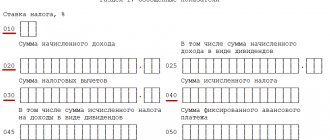Hello! In this article we will talk about customs checks.
Today you will learn:
- When is customs inspection carried out?
- Classification of checks;
- What consequences of inspections may there be.
Often running your own business involves producing or selling goods that must be declared before being taken out of the country. In this case, a customs check must be carried out. Let's talk about the features of this process today.
Who is being checked?
- Entrepreneurs or companies whose goods must be declared;
- Any carriers that transport this product;
- Those who store goods on their territory.
They may also check those who are involved in various transactions with goods subject to inspection. In addition, if there is information regarding a specific person that he is using goods that came to him in violation of customs rules.
Features of customs control of goods
Officials can initiate a TC immediately after the goods are imported into the customs territory. When exporting, the TC can be started immediately after registration of the declaration. What is checked during TC: goods and documents; information received; time and compliance with deadlines for customs procedures; activities of persons involved in operations.
The following are subject to customs control:
- Goods transported across the customs border (including commercial consignments of goods, personal belongings of citizens, cars, international mail);
- Documents relating to goods and vehicles under customs control;
- Deadlines for completing procedures in relation to goods under customs control and operations with such goods (for example, compliance by the carrier with established deadlines for the transit of goods);
- Vehicles for the international transportation of goods (trucks, trains, ships and aircraft, various types of transport packaging (containers, wagons, etc.));
- Information relating to goods and vehicles under customs control;
- Activities of persons performing customs operations (individuals, legal entities (carriers, customs brokers, authorized economic operators, temporary storage warehouse owners, etc.)).
Desk customs inspection
This check is carried out by comparing the data that was received during customs operations with the data recorded in accounting. It is carried out without visiting the person being checked. In addition, warning about its implementation is not necessary.
The reasons may be:
- Materials received from various regulatory authorities;
- An order issued by the customs authority of a state that is a member of the Customs Union to carry out control in the form of an inspection;
- Planned inspection activities.
As soon as the preparatory stage is completed, the departments responsible for this are engaged in drawing up a memo. Based on which the decision will be made whether to carry out verification activities. The decision will be formalized in the form of a resolution, the date of which will be the start date of the inspection.
In order to obtain accounting and other documents for inspection, the official sends a written request to the person being inspected, in which he may require their provision.
The request clearly states the time frame within which the information must be provided. If this time is not enough or the documentation is missing, the person being inspected may request an extension of the period, or notify that the documentation is not available. If this is not done, the person being inspected will be held administratively liable.
It is prohibited to conduct a desk inspection in relation to the same product.
It is worth paying attention to such an important aspect as documentation. In what form it should be provided, how long it should be stored, we will find out further.
Governing legislation
Desk customs inspection as a legal category was introduced by the Customs Code of the Customs Union (CU CU), which came into force on July 6, 2010 and began to operate in the common customs territory of Russia, Belarus and Kazakhstan. Due to the fact that the CU has become a structure within a larger interstate association - the EAEU, which several more states have joined, this code is planned to become a new document, the jurisdiction of which will extend to all EAEU countries.
For more information about the establishment of a new structure, the EAEU, on the basis of the Customs Union, read the article “Since 2015, the Eurasian Economic Union has been operating instead of the Customs Union .
Thus, on December 18, 2014, the draft EAEU Customs Code was sent for consideration to the governments of states that were at that time members of the Customs Union and the Common Economic Space (since 2015 - the EAEU).
It was initially assumed that the entry into force of the new EAEU Labor Code would occur on 07/01/2017 (agreement on the EAEU Labor Code dated 04/11/2017). But subsequently, the Eurasian Economic Commission (EAC) announced the postponement of this deadline to 01/01/2018.
The new Customs Code (EAEU Customs Code) provides for:
- simplification of customs procedures for business;
- transfer of a number of powers to the EEC level;
- use of modern information technologies (rejection of paper declarations and the need to submit a package of accompanying documents);
- minimizing physical contact between foreign trade participants and officials, etc.
But while the new Customs Code of the EAEU has not entered into force, the current source of law regulating the procedure of desk customs inspection is the Customs Code of the Customs Union (as amended on 05/08/2015) (annex to the Agreement on the Labor Code of the Customs Union, adopted by the decision of the Interstate Council of the EAEU at the level of heads of state dated November 27, 2009). The main provisions related to the procedure under consideration are contained in Chapter. 19 TK TS.
On-site customs inspection
This check is carried out with a visit to the actual address of the legal entity or individual entrepreneur. It can be carried out according to plan or unplanned.
If the inspection is carried out on the basis of a plan, it requires a decision made by the customs authority. Scheduled inspections are usually of a preventive nature, their purpose is to monitor compliance with legislation.
Unscheduled inspections are carried out to identify violations.
The basis for its appointment may be:
- Official information received from the state. organs;
- Information received from higher customs authorities;
- Other official information;
- Results of desk checks.
Before the inspection begins, customs officers analyze all available information. There is a special analytics division for this purpose. The value of all goods subject to declaration is also examined.
Sometimes, to make a decision on an administrative penalty, only the analytical stage is sufficient. If the data is clearly insufficient, an administrative investigation or on-site inspection is ordered.
If the on-site inspection is scheduled, a notice is sent to the inspected legal entity, with a notification confirming the fact of receipt. If the registered mail is returned (there is no addressee) this is not a reason to cancel the check.
The person must also be given a decision to carry out verification activities.
Before the inspection begins, employees are required to present their official identification.
If the document was signed by a person who did not have the right to do so, employees may not be allowed onto the company’s territory.
If the check is desk-based, then customs officers only study the documentation.
And if it’s traveling, then they may well:
- Inspect the goods;
- Inspect the premises and territory;
- Conduct an audit;
- Seize and seize goods;
- Take samples;
- Request information and documents;
All activities that are planned to be carried out must be listed in the decision on its implementation.
If the presentation of the results does not raise any questions, they can be used in court to form an evidence base.
Carrying out customs control after the release of goods
Carrying out customs control after the release of goods (TCPVT) is the actions of customs authorities aimed at identifying and preventing violations of the law. This type of control is carried out after crossing the customs border and is called “subsequent”. To carry it out, a special customs department was established in 2012. Subject to verification:
- the reliability of the information declared when declaring goods;
- targeted use of goods and compliance with restrictions in cases related to conditional release, with the provision of benefits for the payment of customs duties.
All information provided is compared with that obtained from accounting audits, reports, bank transactions and other information. According to Art. 311 of the EAEU Customs Code, not only goods and documents are subject to customs control, but also the activities of persons providing customs services, for example, a declarant or a customs representative, as well as the activities of temporary storage warehouses and duty-free shops. The purpose of customs control is to identify violations, protect the domestic market of the Russian Federation, and prevent illegal trafficking of goods. During the control, violations are revealed for significant amounts amounting to billions, and tons of goods are seized and destroyed from illegal traffic. In addition, during TKPVT they carry out other forms of verification: they monitor compliance with legal requirements for mandatory labeling of goods. The mandatory labeling of goods introduced in Russia makes it possible to solve problems related to the prevention of illegal circulation of goods, counterfeiting and smuggling.
Duration of customs control after the release of goods
The period for carrying out customs control after the release of goods for domestic consumption is carried out until the expiration of 3 years. In addition, customs authorities, according to the EAEU Customs Code, have the right to carry out control before the expiration of the period that the goods are “under customs control.” This period may continue, according to Art. 14 of the EAEU Labor Code, before the occurrence of various circumstances, for example, before acquiring the status of “goods of the union”, before the goods are exported from the customs territory, destroyed, before the goods are recognized as production losses, before the goods are declared unsuitable for commercial use, before the completion of the transit procedure and some others. In addition, TKVT can be carried out regarding goods released conditionally. A procedure has been established by law to ensure the exchange of information between customs and tax authorities and internal affairs bodies. Customs control after the release of goods can be carried out if violations of customs legislation are detected.
Problems of customs control after the release of goods
The problems of carrying out customs control after the release of goods are associated with the need to increase the efficiency of customs control in general. It is necessary to raise the level of customs control so that violations of the law lose their economic viability. For this purpose, methods and forms of customs control are selected. The creation of a continuous monitoring system will reduce waiting time at the border.
Registration of results
When the verification is completed, both parties sign the corresponding document. In this case, this is the Inspection Report. It contains the results of the inspection and an order (if any discrepancies are found). This documentation is signed by both parties.
From this day forward, verification of this person can no longer be carried out.
The act is prepared within 5 days. One copy of it is sent to the entrepreneur or company within this period.
At this point the verification is considered complete.
How to behave as an entrepreneur
Any inspection makes the entrepreneur nervous, even if he has nothing to hide. Let's talk about how to behave if inspectors, in particular customs officers, come to you and what consequences may arise from the unlawful behavior of both parties.
At the very beginning of communication, you should pay attention to the documents (identification) that customs officers show. If the documentation is in order, it is your responsibility to allow the inspector into the territory. If this is not done, employees have the right to enter the territory using physical force. If it comes to this, then in the presence of witnesses the prosecutor is notified about this within 24 hours.
For obstructing the inspection, the entrepreneur faces a fine. An entrepreneur or company manager will be fined 2-4 thousand rubles, other employees 500-1000 rubles.
The inspector's responsibility is to give you a copy of the decision ordering the inspection. You get to know him, ask questions if something is not clear.
You, as an inspected person, have the following rights:
- Do not allow inspectors into the territory without presenting documents;
- Refuse to provide information on issues that are not specified in the decision;
- Request clarification of your rights and powers;
- Deny access to the territory to those inspectors who are not included in the inspection decision.
Verification of Authenticity and Trustworthiness
Features of the application of customs control forms provide for the mandatory establishment by officials of the compliance of the information or documentation received with their validity and standards. The list of tasks of each employee interacting with applicants includes:
- Clarification of information about recipients and carriers, goods and declarants.
- Assessing the correctness of filling out the fields of the declaration from the point of view of the instructions.
- Verification of details and validity periods of submitted documents.
This technique is characterized by a wide range of application possibilities, the presence of regulations that determine the procedure for implementing individual operations, as well as the right to a reasoned request for additional materials - but without increasing the release deadlines established by law.






